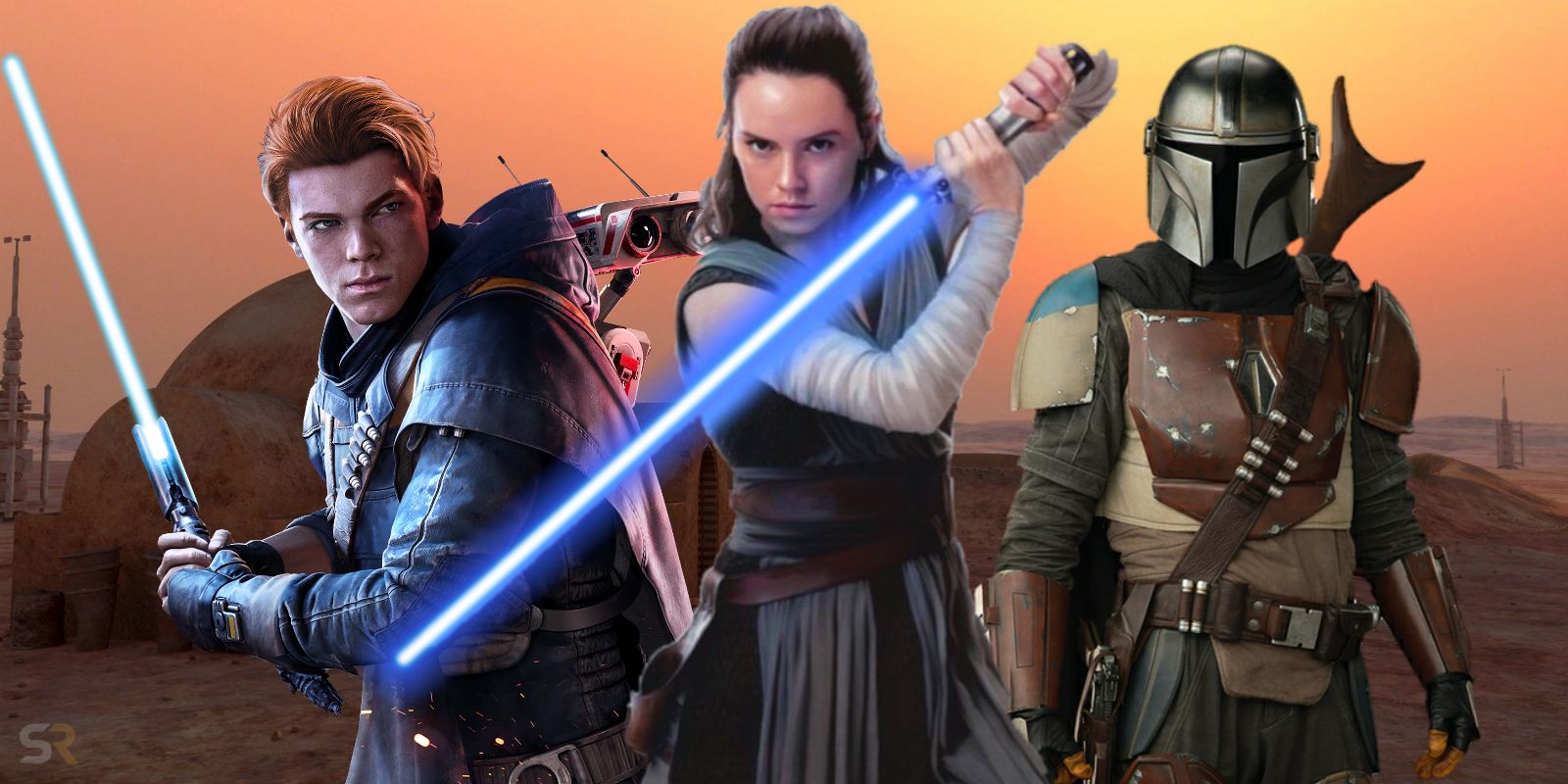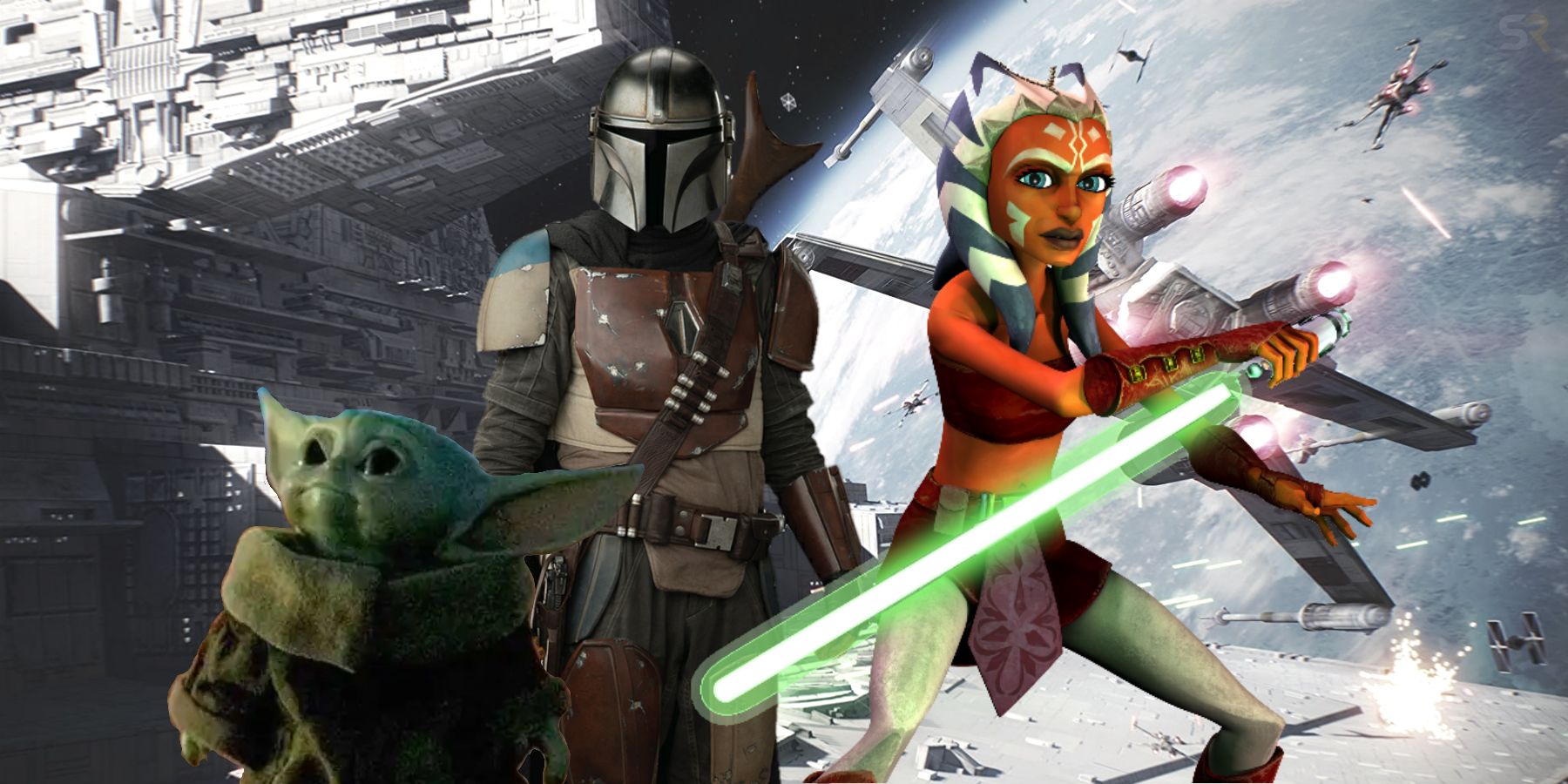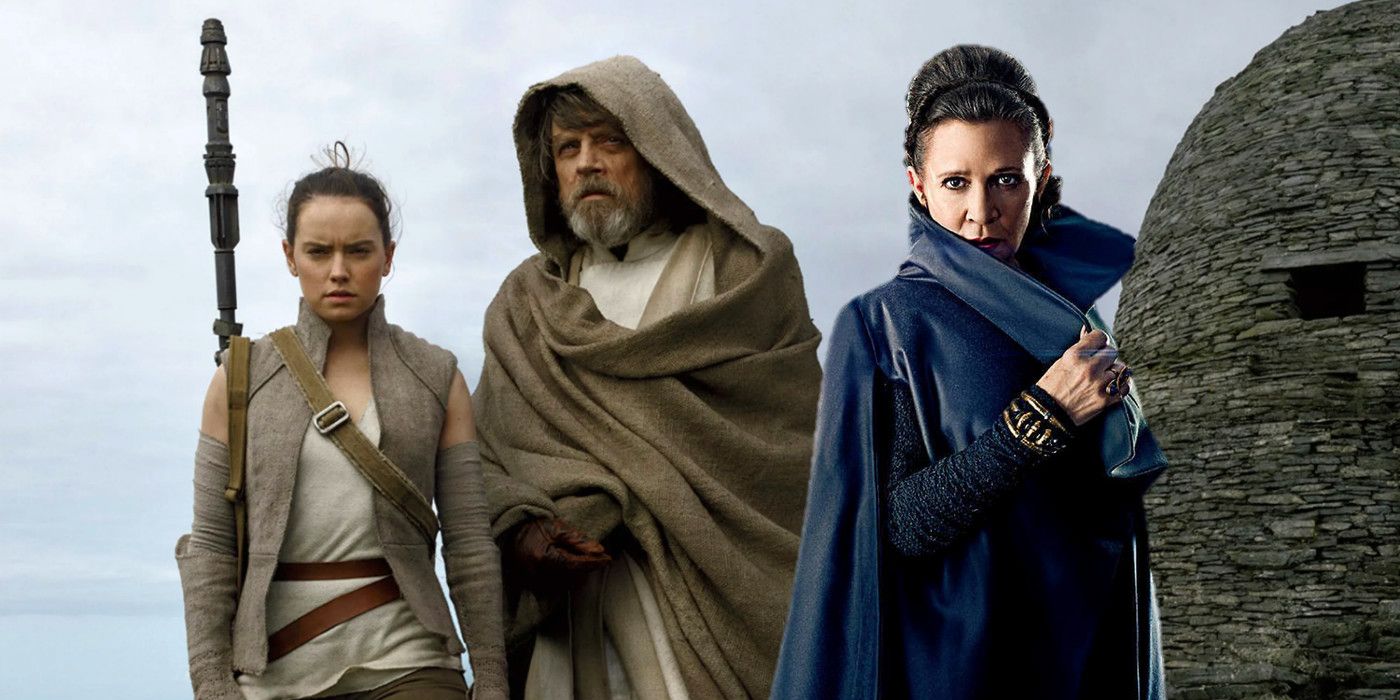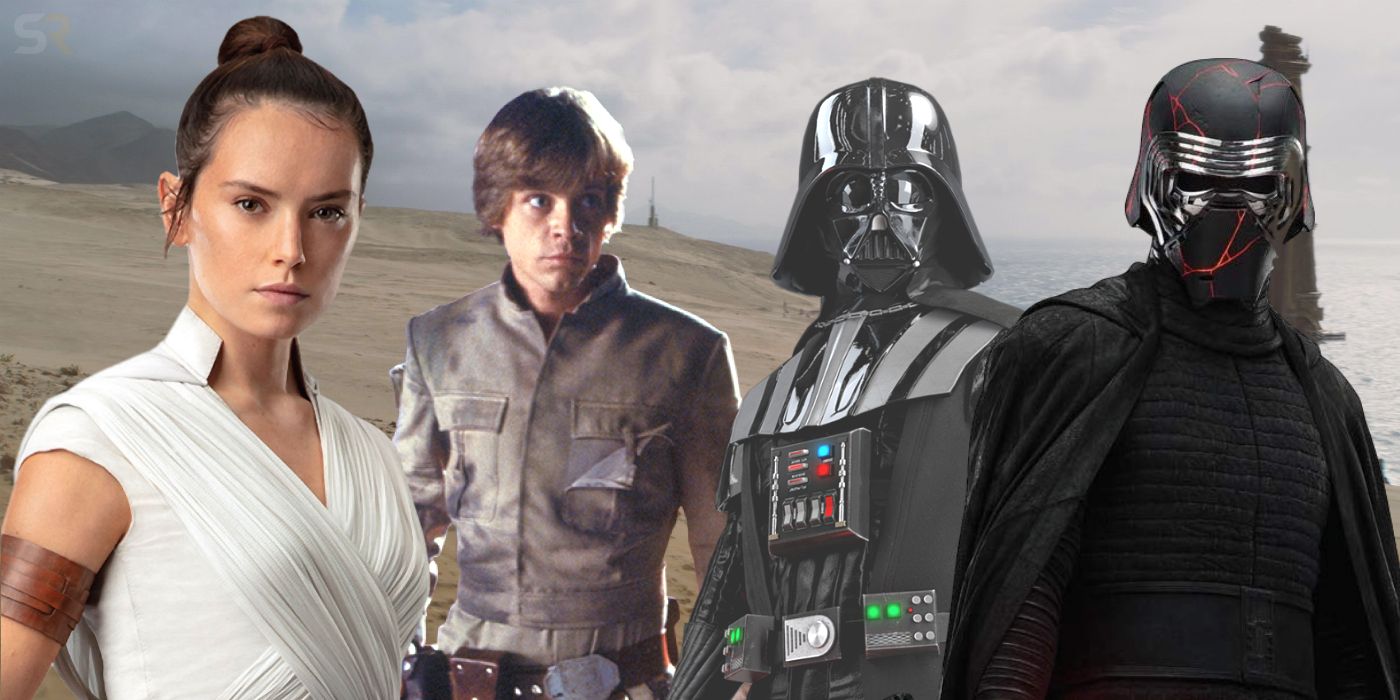
The Star Wars fandom is currently having to contend with extremely ambivalent feelings; on the one hand, there is more Star Wars content out now than there has been in years, on the other a lot of this content is hit or miss. Star Wars: The Rise Of Skywalker confirmed an emerging pattern: the movies have mostly been ‘miss’.
Disney purchased Lucasfilm in 2012, making fans nervous. The Star Wars prequels demonstrated what can happen when too much money and not enough scrutiny is thrown into a franchise. But faith in Disney’s ability to produce quality content remained high. After all, 2012 was the year The Avengers hit the theatres.
New Star Wars content learned from mistakes of the past, eschewing cheap and, frankly, ugly CGI for lovingly crafted practical effects that looked amazing. At the same time, however. there's a lot of it that refuses to take riskss. Star Wars can be found across media formats: games, television shows, movies. Its highs and lows have been pretty extreme.

Star Wars as a whole isn’t failing; the games and television shows released under its mantle have been amazing. The Mandalorian was met with immediate acclaim. Beautifully shot and crafted, it balanced layered storytelling with a real sense of fun. Plus, it was the birthplace of Baby Yoda, subject to countless memes and contender for being the cutest Star Wars character to date. The Clone Wars will be releasing its final season on Disney+ in February of this year. Although season 6 came out six years ago, the series has managed to garner fan interest. Trailers for The Clone Wars season 7 have been met with excitement, promising the same high calibre visuals and teasing iconic battles to come.
On the video game front, Jedi: Fallen Order has been met with rave reviews since it hit the shelves in November 2019, including being named ‘Game of the Year’ by Titanium Awards. Enjoyed by critics and fans alike, its action-adventure style gameplay combines combat mechanics with world-building exploratory options. Even Star Wars: Battlefront 2 seems to have worked out most of the kinks that plagued it at its 2017 launch. Although EA was initially heavily criticized for janky mechanics and an overuse of pay-to-play in-game microtransactions, it has since updated the game. Real money no longer drives gameplay, loot boxes are mostly cosmetic, and developer DICE is constantly tweaking the content to keep it fresh. Across animation, live-action TV, and video games, Star Wars has been great recently, with something for everyone to enjoy.

Many point to Star Wars: The Last Jedi as proof of how bad Star Wars movies can get. It was an extremely controversial movie, something best encapsulated in its Rotten Tomatoes score. Critics rated it highly, at 91%, but it couldn’t even get a ‘Fresh’ audience rating, with a score of 43%. Its successor wasn’t exactly an improvement, with The Rise of Skywalker the lowest-rated Star Wars movie on Rotten Tomatoes. It confirmed what fans feared: the problem with new Star Wars is the movies. Although some fans enjoyed it, overall Star Wars 9 was met with disappointment. It proved the sequel trilogy’s lack of structure, undoing and rewriting some of the better elements from The Last Jedi, such as its thematics and character relationships.
That goes without mentioning the bland mess that was Solo: A Star Wars Story. Solo bombed at the box office, earning just under $400mn. Many fans avoided it because they felt it was unnecessary. Those who did decide to watch it were “rewarded” with a mediocre origin story. It did so poorly that Lucasfilm decided to freeze development on other Star Wars spinoffs that were in the works, including a movie about Boba Fett. With the newest trilogy now over, it is unclear what comes next in the world of Star Wars cinema. The only information released about the next Star Wars movie is that it can be expected to air sometime in 2022. While fans are loving the Star Wars television shows and games, the movies just can’t quite get it right.

The success of its shows and games proves audiences are still hungry for Star Wars content. The sequel trilogy did well at the box office, but much of the movie’s failure comes down to expectation. Star Wars: The Force Awakens was probably the most anticipated movie of the three. It had the most riding on it. It not only launched a new trilogy, but was ground zero for all Star Wars content that came out after. Despite the pressure, it performed well, using a soft reboot technique to appease old fans while drawing in new audiences. At the time, this went off without a hitch, but really it was the beginning the Star Wars movies’ main problem: fan reception influenced story. The lack of cohesion throughout the sequel trilogy can be attributed to the franchise’s impossible goal of appeasing all fans. The Last Jedi was liked by critics but disliked by fans in part because it took more risks. The Rise of Skywalker tried to undo this but ended up with a movie full of retcons and dissatisfying character arcs. Fan judgement swayed behind-the-scenes decision-making to the detriment of the movies.
The movies also suffered from legacy struggles. The television shows carve out their own space in the Star Wars universe; The Mandalorian introduces all new characters while The Clone Wars builds on the characters and plotlines from the once-despised Star Wars prequels. This has given them room to develop away from the looming shadow of past success, which the newest Star Wars movies have been unable to let go of. The original Star Wars trilogy is beloved by fans. By borrowing characters and settings from it, the new Star Wars movies set themselves up to fail, or at least, to seriously struggle with success. Even Rogue One, one of the more successful Star Wars movies, doesn’t really bring much new to the table; going in, fans know how it has to end. While it delivers on the action, living up to expectations, it misses out on presenting something unique; its characters are hollow and mostly forgettable.
The Star Wars movies have, broadly, suffered from a lack of vision. It is easier to keep a tight grip on the way a game or show is developed. Usually, while individual episodes might have different writers and directors, there is overall one showrunner who can ensure consistency. All the directors brought onto Star Wars are skilled. Audiences need only look as far as the original Iron Man to know John Favreau is a proven genre launcher. Dave Filoni’s work on Avatar: The Last Airbender prior to The Clone Wars speaks for itself. J.J. Abrams is a known genre launcher. He did it for Star Trek; he did it for Star Wars. But movies have so many more people involved in the decision-making process. The sequel trilogy’s inability to keep one director/writer destroyed any semblance of continuity.
While other Star Wars content was able to exist separately, the movies tried to please everyone, and in doing so pleased no one. Whole seasons of the television shows have already been shot and edited by the time they hit the streaming platform. A Star Wars game appeals to Star Wars and gaming fans alike. The movies are primarily there for Star Wars fans, meaning so much more rides on these films that have, so far, crumbled under the pressure.
from ScreenRant - Feed https://ift.tt/2S0GNR3

0 Comments